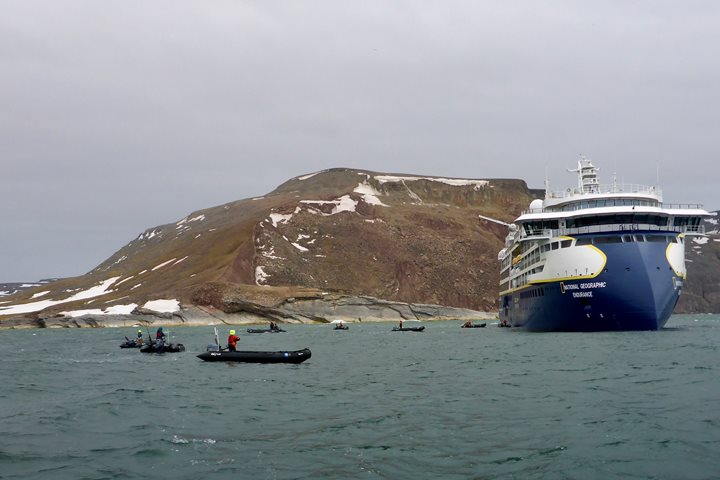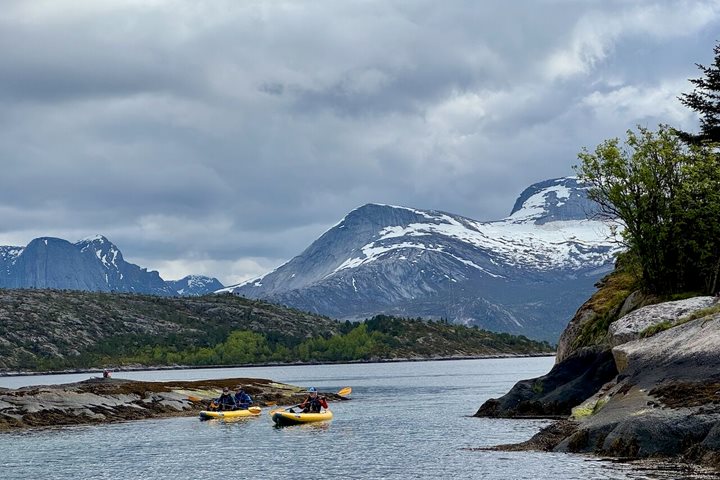We awoke deep in Melfjord with steep, polished rock faces and tumbling waterfalls in all directions. The head of Nordfjord, the northern arm of Melfjord, extends into Saltfjellet-Svartisen National Park. This protected area embraces the rugged peaks of the Svartisen ice cap on its west end and extends east to the Swedish border. The ice cap, Norway’s second largest, straddles the Arctic Circle and reaches down into coastal valleys to form the lowest elevation glaciers in mainland Europe.
With calm conditions, it was the perfect location to explore by kayak and Zodiac cruise. Sheer, granite cliffs rise over 1,000 meters while the fjord itself is narrow and nearly 200 meters deep – dimensions that are difficult to comprehend upon first viewing. Harbor seals curiously eyed and swam among our yellow kayaks, while others hauled out to bask in the sun on warm boulders at the water’s edge. Zodiac cruisers traveled through time from the end of the fjord toward the mouth, observing the gradual establishment of lichens, mosses, grasses, shrubs, and birch trees in post-glacial retreat succession. Arctic tern, Eurasian oystercatcher, and black guillemot calls added to the otherwise quiet setting.
The Træna archipelago includes hundreds of small, flat islands, only five of which are inhabited. This evening, we enjoyed a post-dinner walk around town, an opportunity to visit the local museum, church, and the Arctic Circle Monument. The church was built in 1773 of timber that washed ashore on the island. This proud community is the oldest fishing village in Norway with a current population of around 400; while most people remain employed in related work, the cod fishery that drew earlier generations to the site is no longer the primary focus.
Around the globe, the Arctic Circle demarks the southernmost extent of the midnight sun on the summer solstice and the edge of the polar night on the winter solstice. Our crossing today was an invisible moment of geographic passage that begins a new chapter of this voyage.









